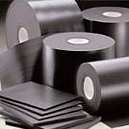Importance of Strength and Durability of Sealants and Adhesives for Gasketing Purposes
- 10 December 2015
- Posted by: Kim M
- Category: Article
 A comprehensive series of engineering solutions cover applications for engineering products related to sealants and adhesives for gasketing purposes. The gasket mates and mechanically seals, using flanges and dense fasteners to secure a bond, but it’s an economical bond, one that functions well enough when compressed but also one that lacks fortified stability. A flaw in the metal or even a slight contraction or expansion event will warp this incomplete linkage and trigger a nasty leak.
A comprehensive series of engineering solutions cover applications for engineering products related to sealants and adhesives for gasketing purposes. The gasket mates and mechanically seals, using flanges and dense fasteners to secure a bond, but it’s an economical bond, one that functions well enough when compressed but also one that lacks fortified stability. A flaw in the metal or even a slight contraction or expansion event will warp this incomplete linkage and trigger a nasty leak.
The Importance of Gaskets
System design will always recognize the importance of a strategically placed gasket, even when that gasket is mostly hidden from view. The pipes and conduits that transfer our fuels and chemical compounds between different tanks couldn’t function without a number of differently shaped gaskets and their fastening mechanisms. They’re shaped by basic geometry, cut as a simple ‘O’ ring or other primitive shape, but they also find their forms complicated and twisted into complex geometrical forms for advanced housings. Car engines use these gaskets, the flattened cut rubber sections and polymer-reinforced cut sheets, and place them in special housing seams. They compress and uniformly fill tiny gaps, creating an airtight seal. Sealants and adhesives for gasketing purposes deliver a huge helping of reinforced strength to this exhaustively engineered segregation outline, boosting a bond that stops leakage, even when that leakage is caused by unimaginably high pressures.
Sealants and Adhesives for Gasketing Purposes Add New Tricks to the Mix
Metal is an inflexible product, one that will naturally expand as a heated liquid passes through metal-lined conduits, but this handy facility is very much limited by the inflexible strength of any particular alloy. A sealant provides heat-resistant flexibility, adding pliability to the scenario and enhanced compressibility. The material is ideally married to a perfectly uniform flange but can adapt to minor pitting and flaws in the metal, filling these spaces and curing to deliver an inviolable seal. The heat or corrosive chemicals pass through the pipe and cross the pipe-to-pipe seam without finding a weak link in the pipeline. Additionally, the material won’t age, as the formulated gasketing substance is designed to cure, transforming into a state that resembles metal but one that still exhibits a certain element of elasticity.
In promoting a formulated chemical profile that always stays airtight, intact, and leak-proof over the entire life of the connection, adhesives provide necessary give-and-take, a quality that metal does not possess. The adhesive prevents the escape of fine gases and liquids, fluids that will wear down substandard sealants and cause a potentially hazardous leak. Remember, the pipe, engine housing, or other mechanical part has undergone a comprehensive inspection process, an engineering test that looks for flaws. Assured of flawless functionality, these strong components must be bonded by durable sealants, adhesives and seals that exhibit equal material tenacity.

